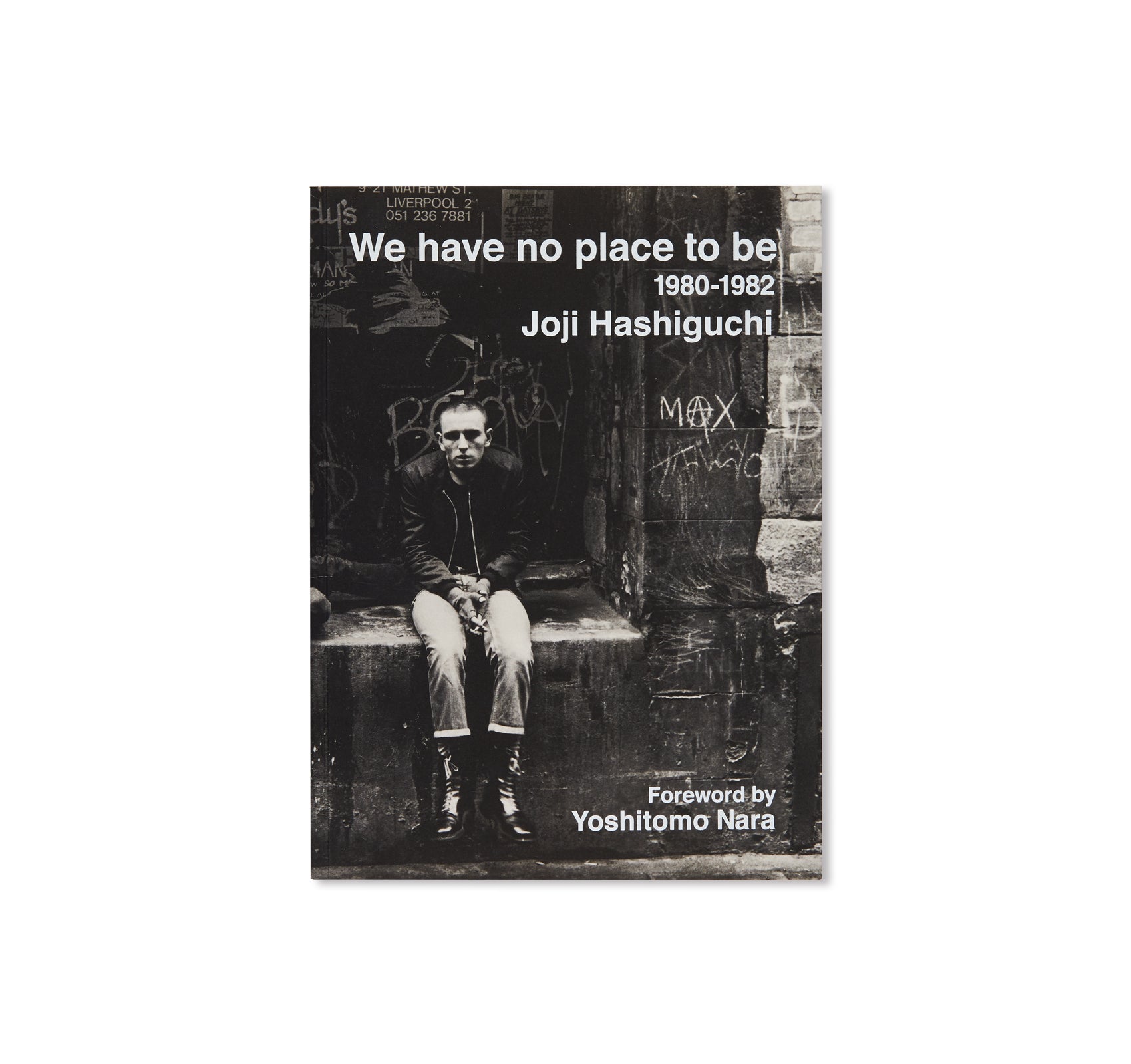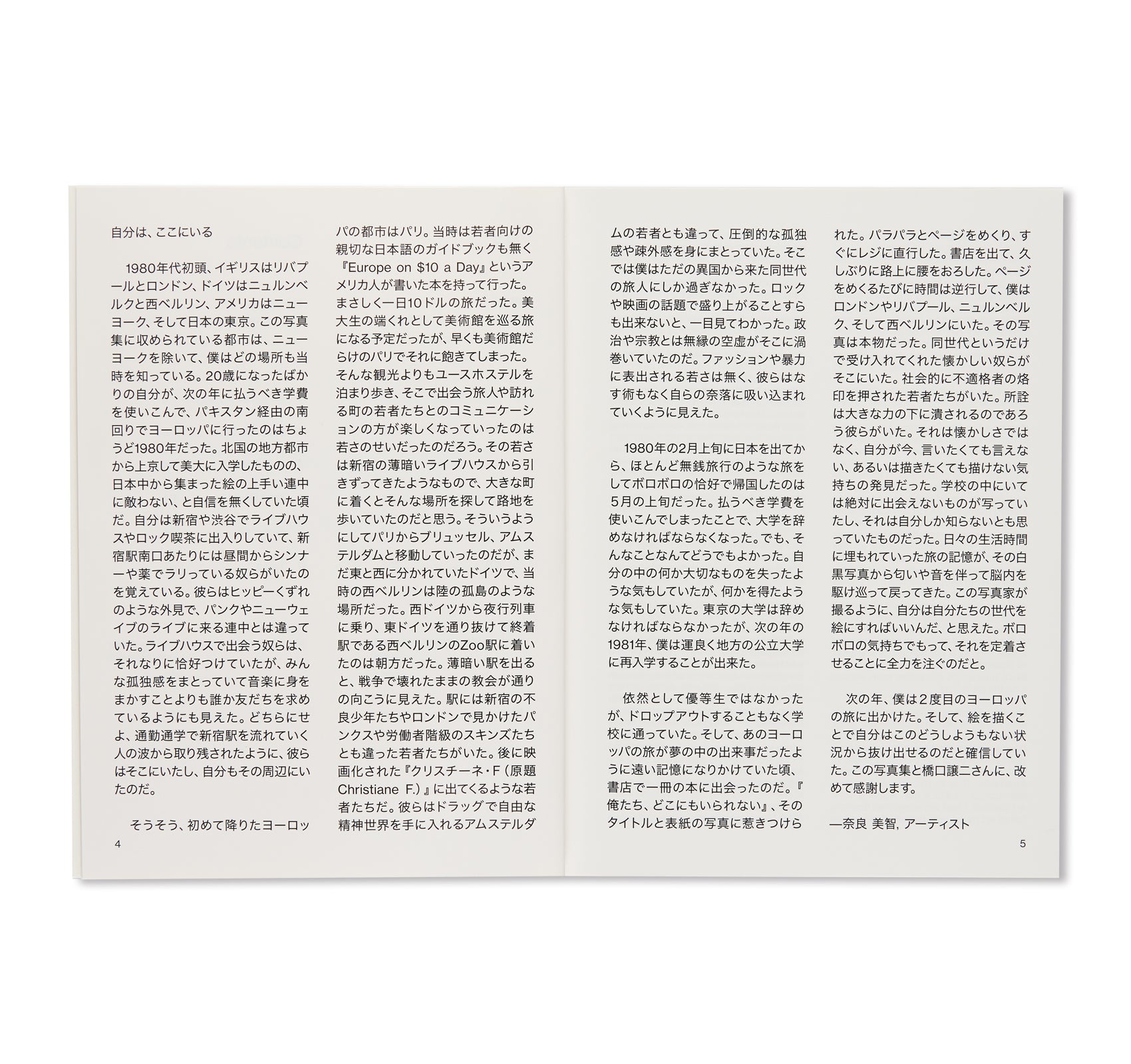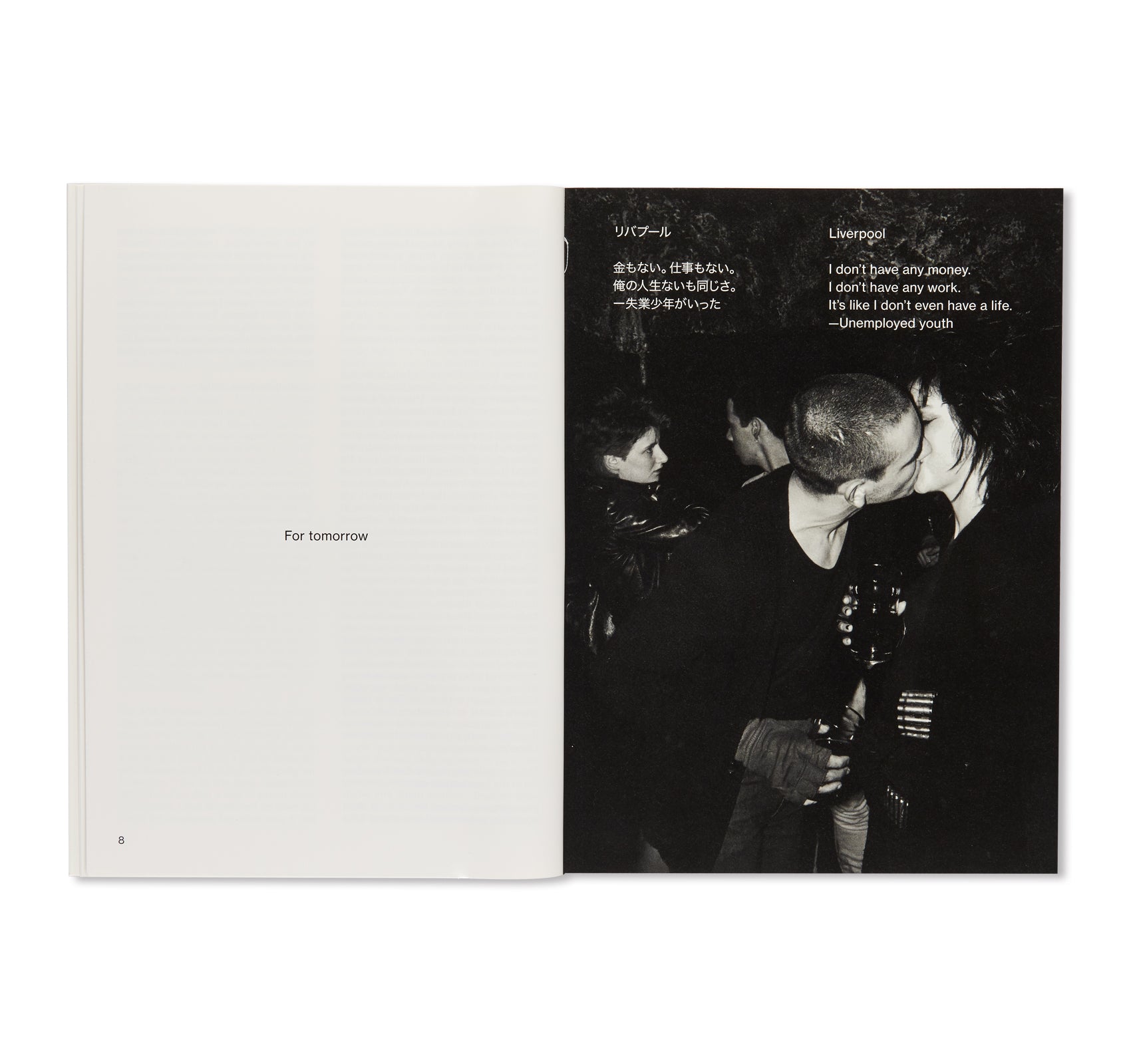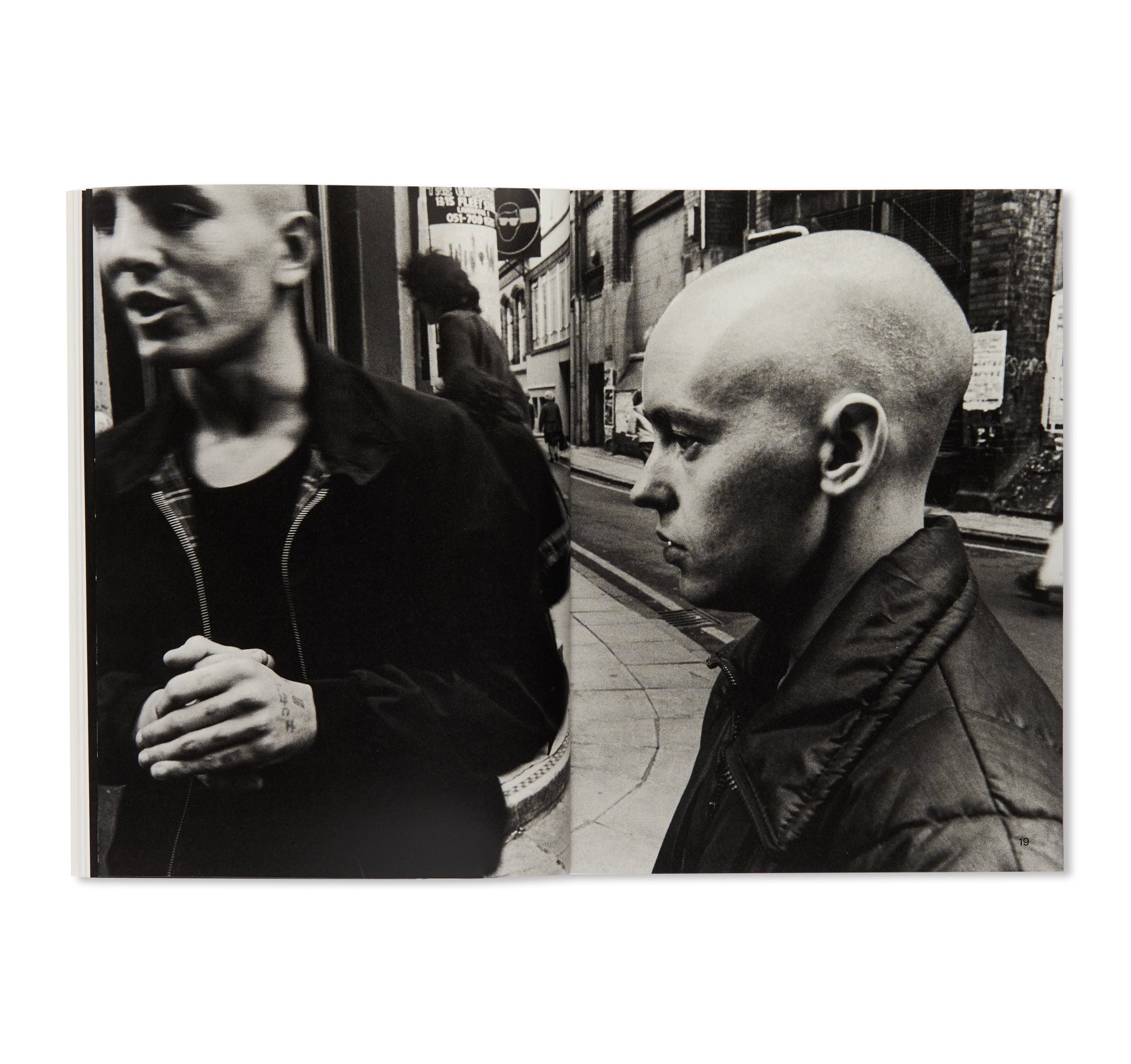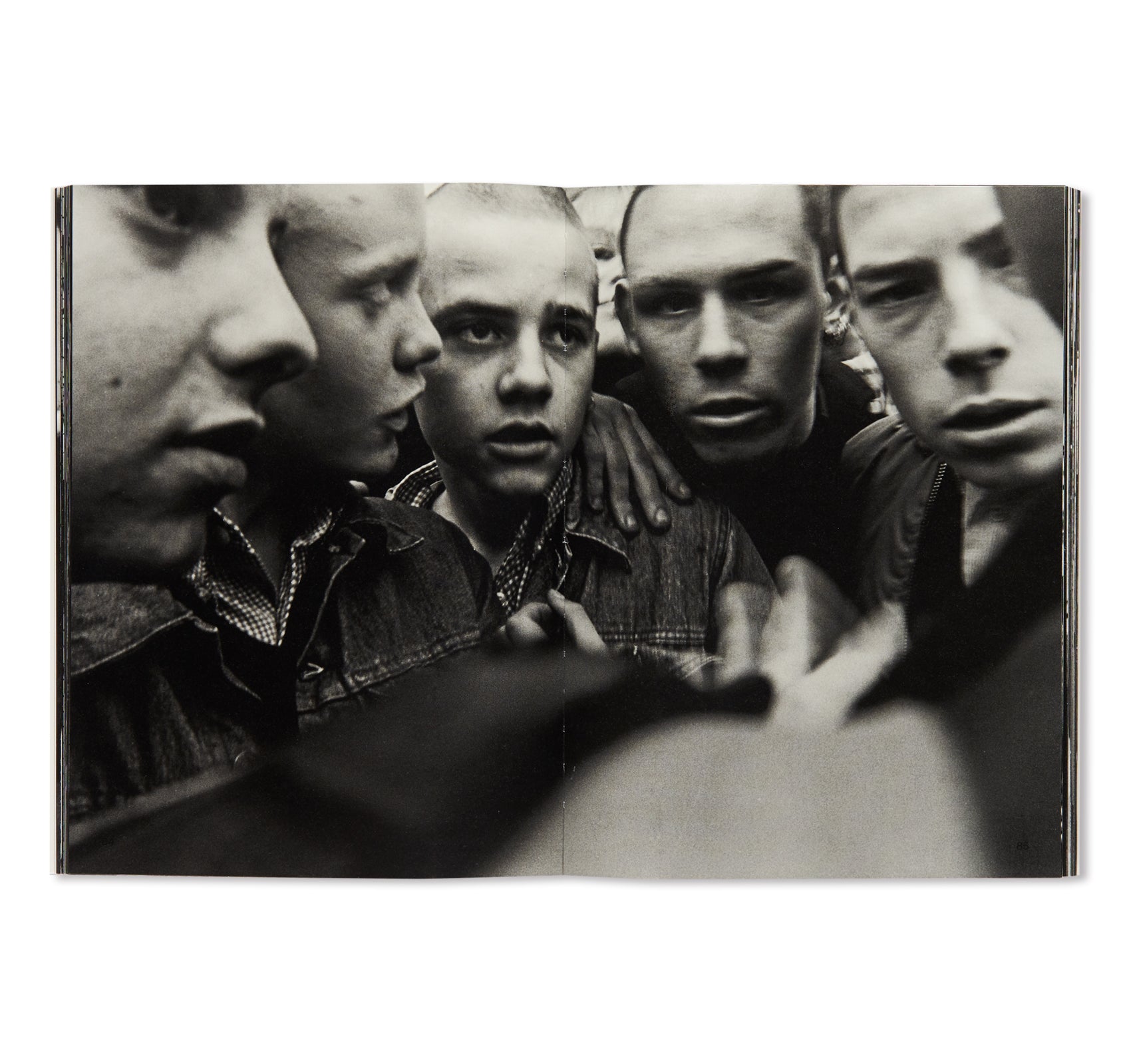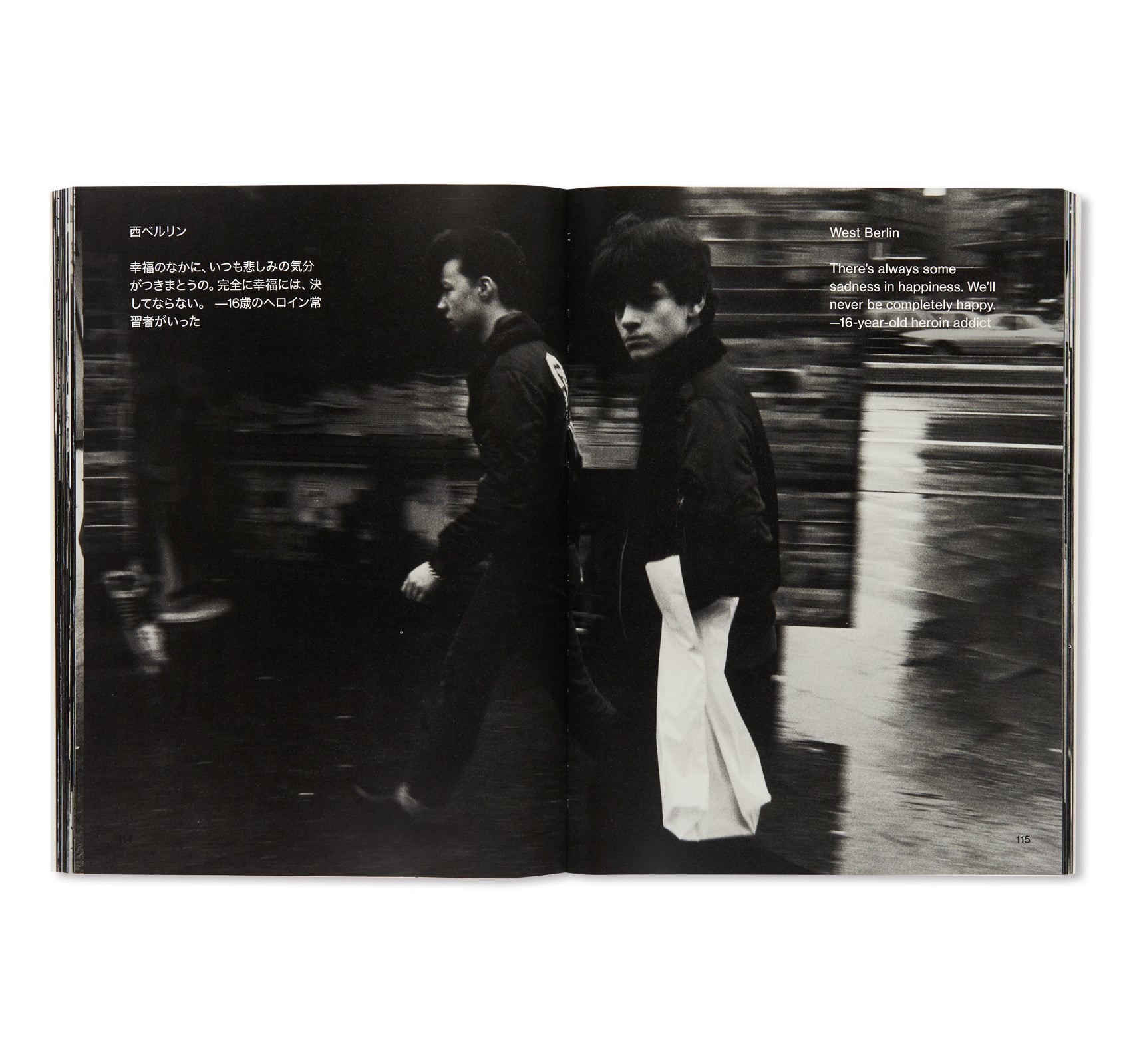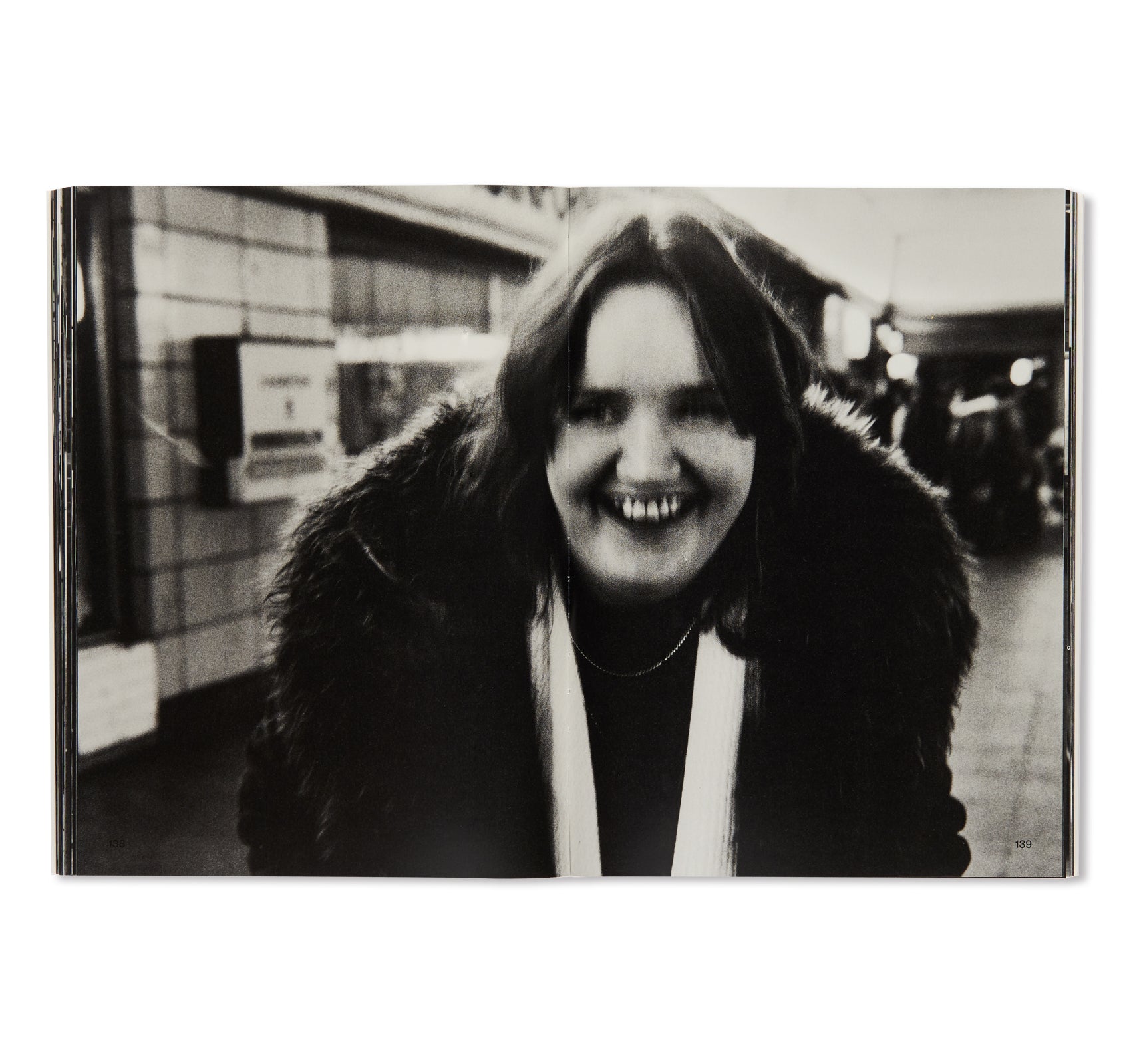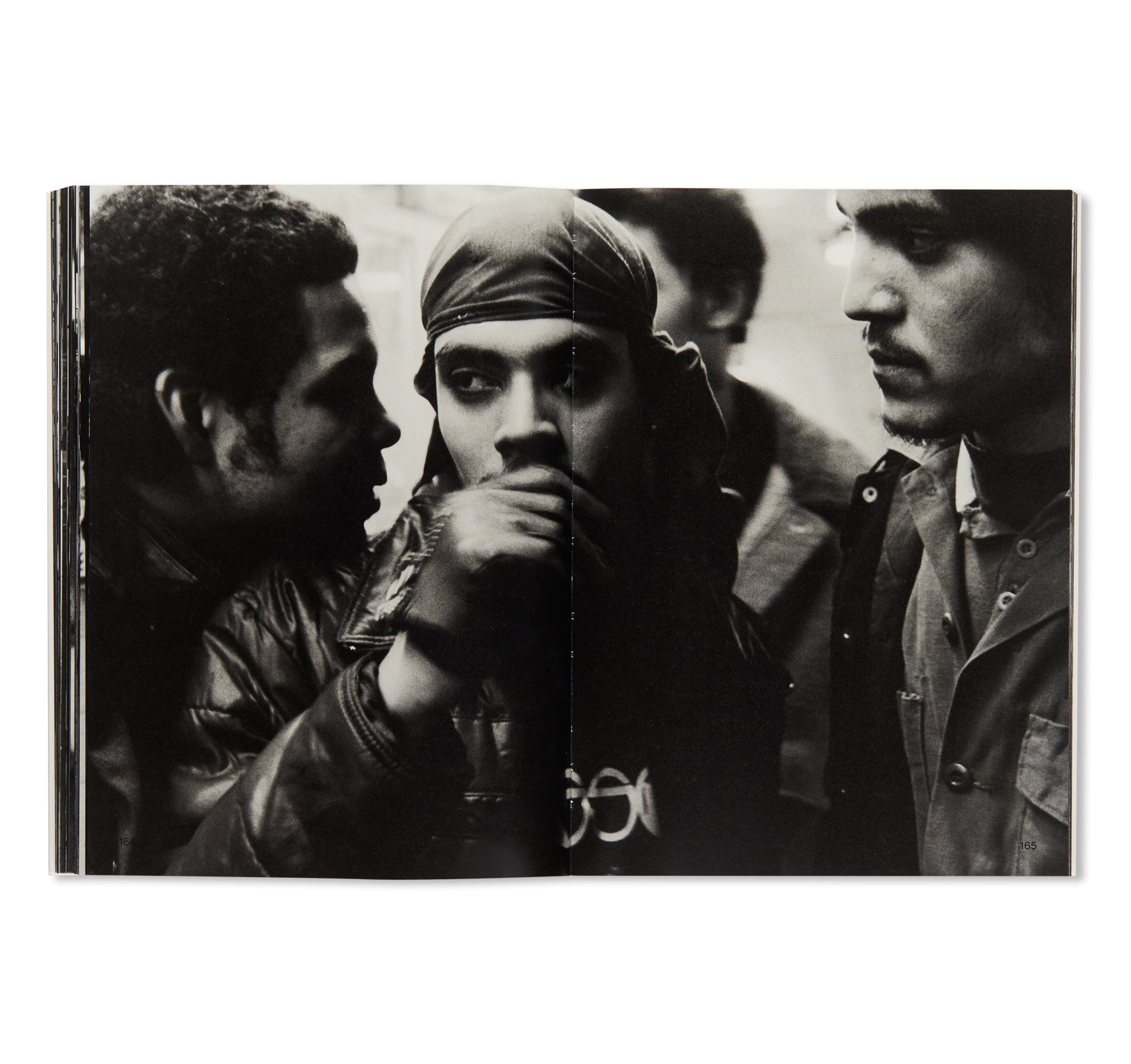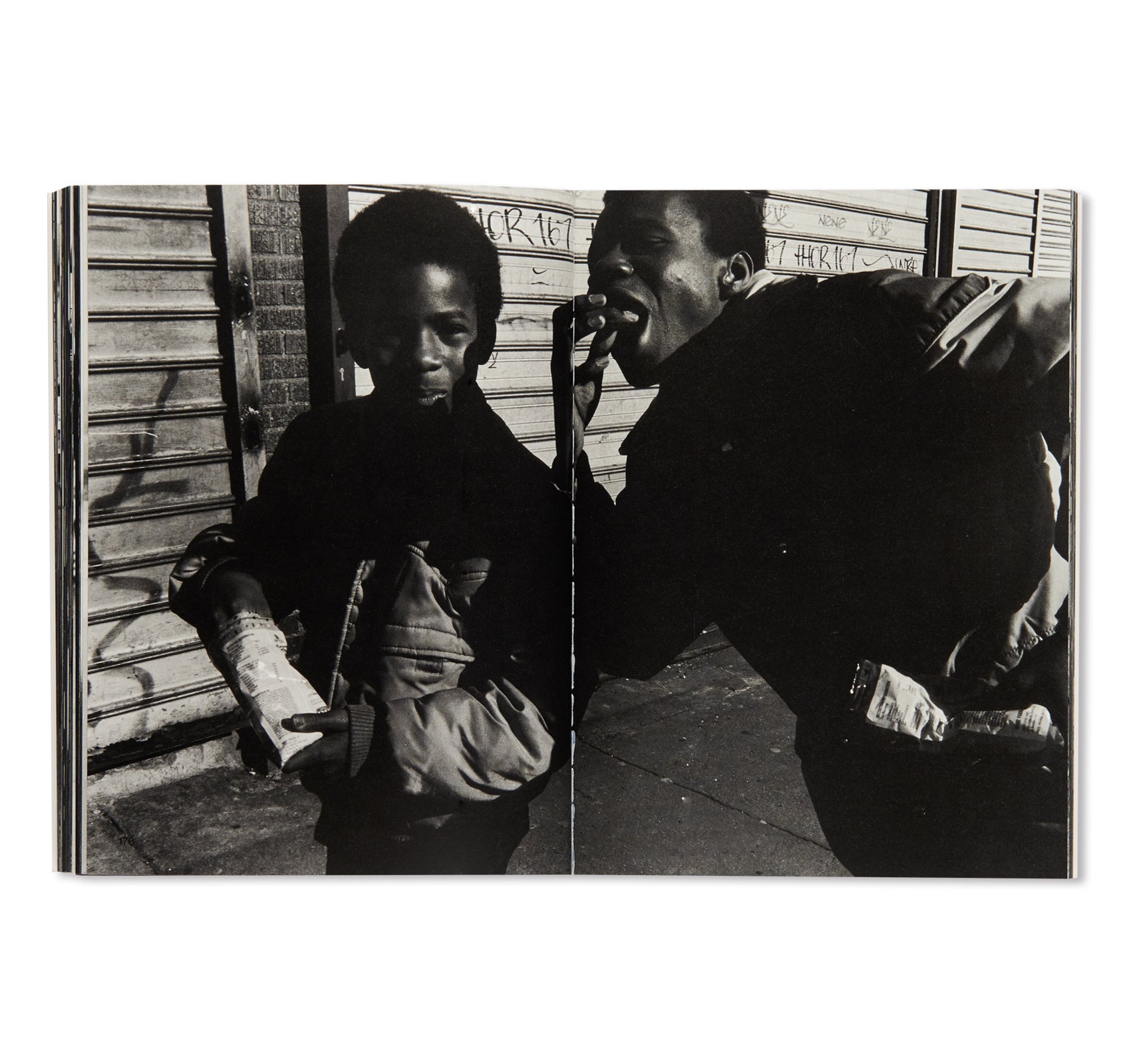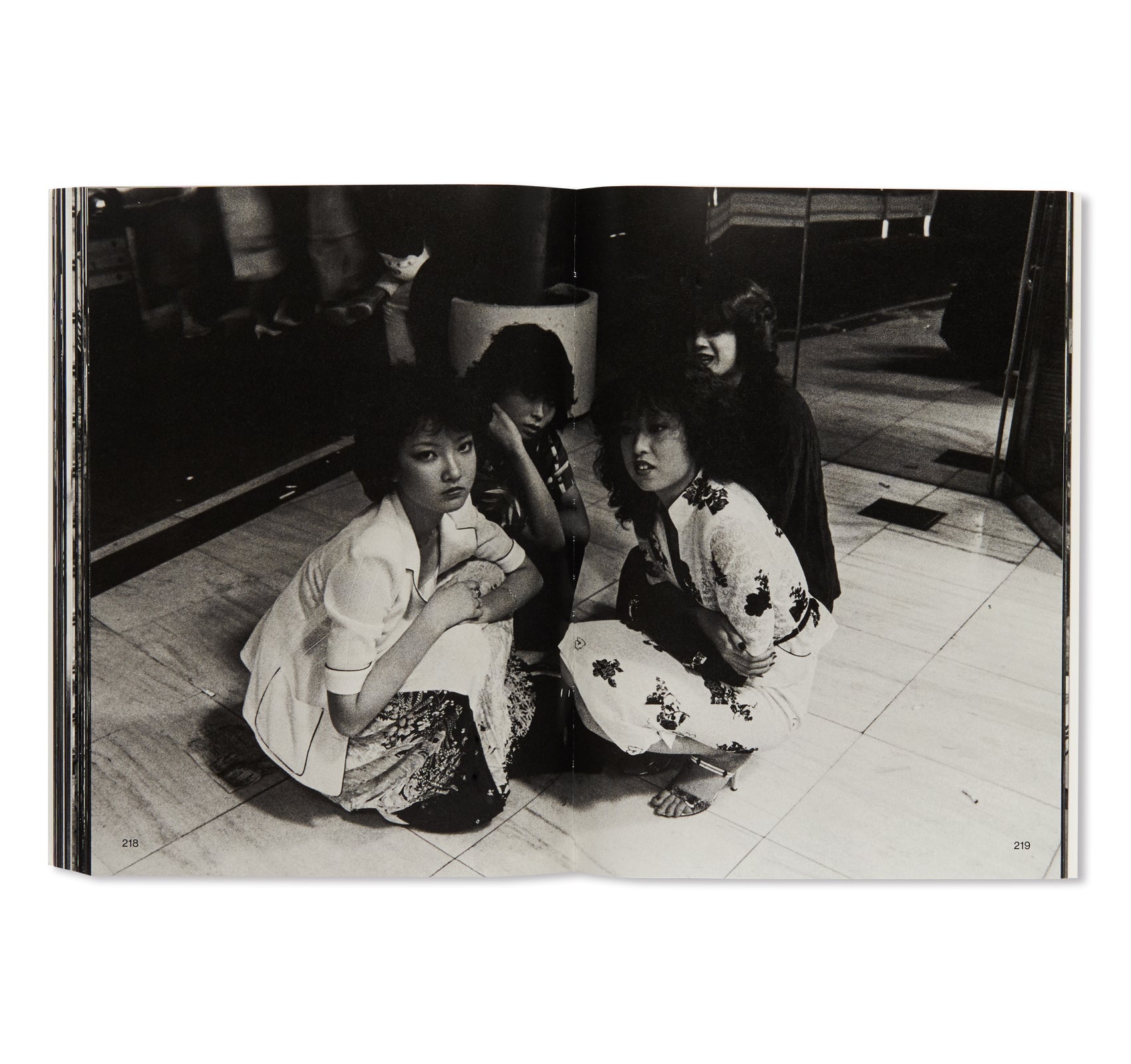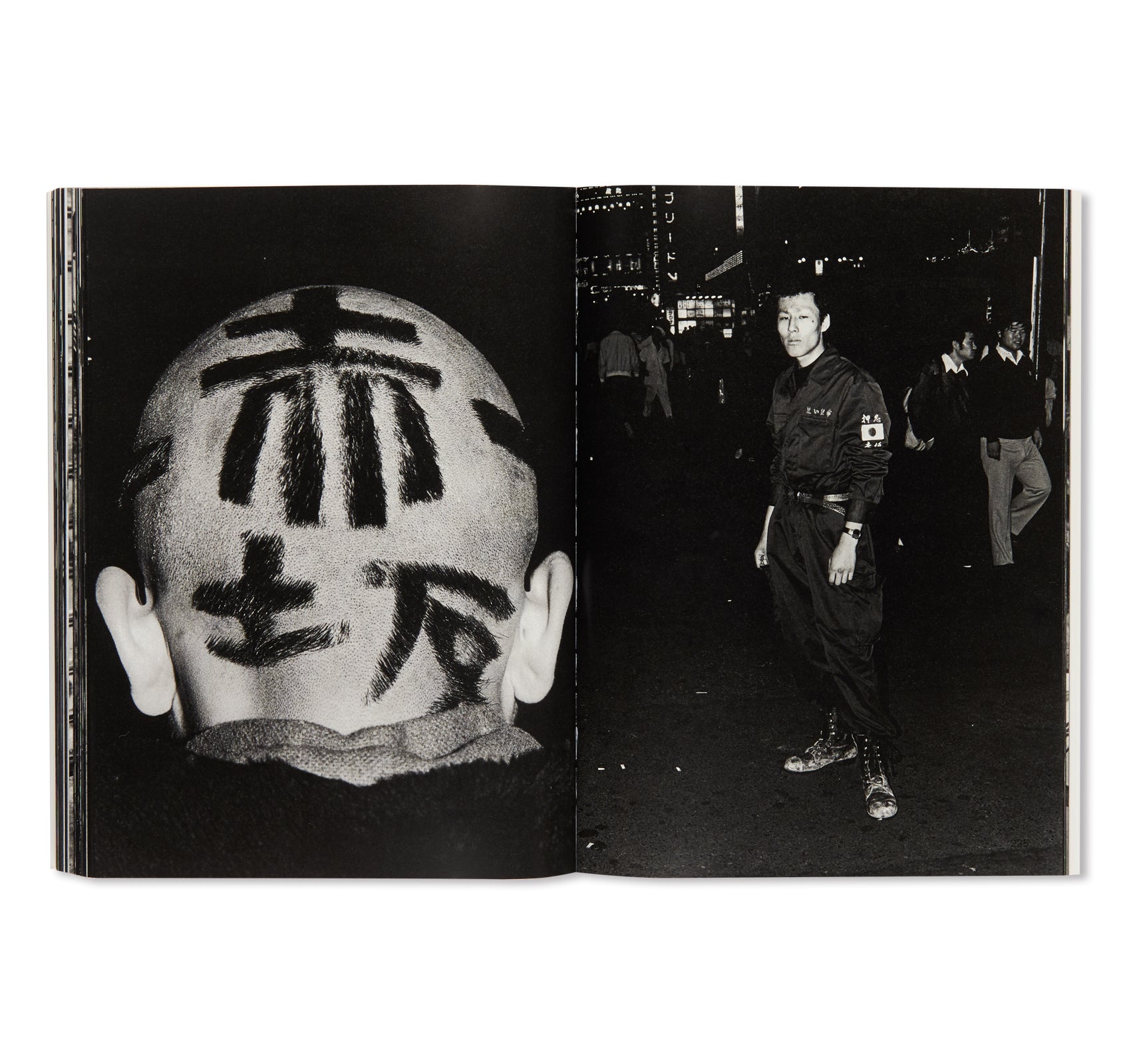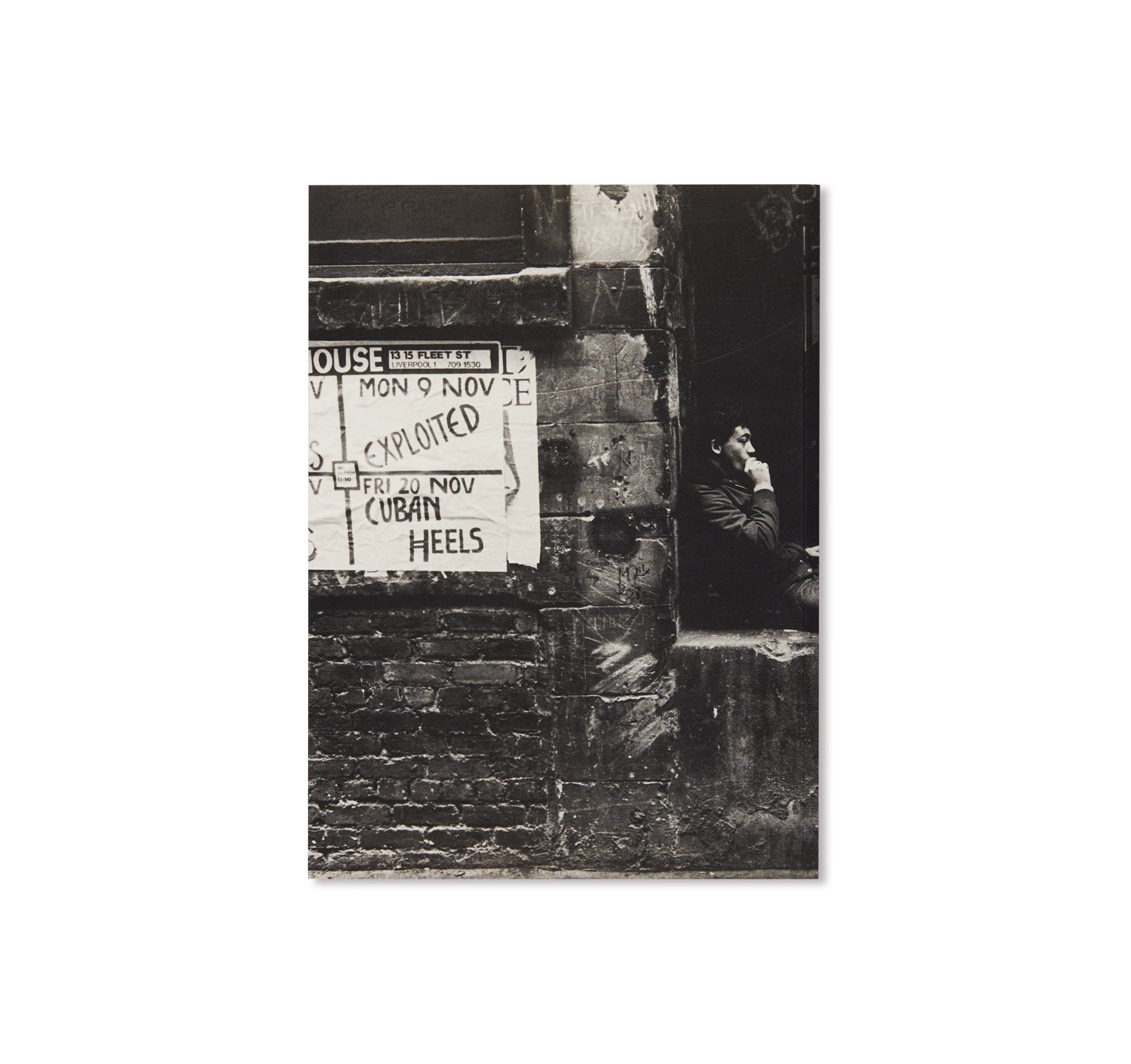WE HAVE NO PLACE TO BE: 1980-1982 / 俺たちどこにもいられない 1980-1982 by Joji Hashiguchi
日本人写真家、橋口譲二の作品集。デビュー作として注目を集めた『視線』(1981年、第18回太陽賞を受賞)と並び、『俺たち、どこにもいられない 荒れる世界の十代』(草思社、1982) は、作者の40年以上に及ぶ礎を築いた重要な初期作品である。30点以上の未発表の作品を含めたモノクロ写真139点、256頁に及ぶ本書は、作者自身が監修・編集し、2色刷りのマットニス加工印刷を施し、当時の臨場感を感じさせる見応えある内容に仕上がっている。
社会が一つの方向に向かい始めた時、少年たちは家や学校を飛びだし路上にいた。規定された生き方からの枠から飛び出す。そのことは少年たちにとって「戦い」であった。そんな東京の若者たちの姿を80年代の初頭、『視線』を通し作者は追求した。その後、作者の意識は東京の路上から日本の外に向かう。
高校時代ビートルズを聞いていた作者は、イギリス・リバプール、ロンドンの路上に立つことから始めた。『われら動物園駅前の子どもたち』(原題『Wir Kinder vom Bahnhof Zoo』クリスチーネ・F著、1978年)と題した一冊の本に触れた作者は、イギリスから西ドイツの街、ニュルンベルク、西ベルリンに移動する。その後、ビートニックに共感していた作者は、ニューヨークに足を延ばした。5つの都市を巡り、それぞれの都市の姿を、路上の少年たちを通して描くことに挑んだ。
ベトナム戦争に疲弊していたアメリカ。サッチャー政権下で不況と失業が深刻化していたイギリス。東西冷戦の最前に位置していた西ドイツ。管理社会が生 まれ始めていた日本。本書『俺たち、どこにもいられない 1980-1982』を通し、80年代の若者たちの姿が現代においてどのような意味を持つのかを改めて問い直す。
世界の写真史において、若者を主題にした作品は数多くある。例えば、ダニー・ライアン(Danny Lyon)、カールハインツ・ワインバーガー(Karlheinz Weinberger)、ブルース・デビットソン(Bruce Davidson)、ラリー・クラーク(Larry Clark)、ナン・ゴールディン(Nan Goldin)、ジョセフ・ズザボ(Joseph Szabo)は、バイクライダーや、ストリートギャングなど路上に集まる若者の姿を捉えた作品を残している。また、ウイリアム・クライン(William Klein)や、エド・ファン・デア・エルスケン(Ed van der Elsken)は、50年代から60年にかけて世界の主要都市をまわりストリートフォトを制作している。しかし、東京のみならず欧米をまわり、80年代の「路上の若者」の姿に焦点を絞る本作は、貴重な写真集と言えるだろう。
また、積極的にコミュニケーションをとらずとも、路上の彼らの心の鎧を解いた、あるがままの表情を引き出したことは、橋口作品の魅力だと言える。それは、社会の矛盾や権威に打ちのめされながらも、不器用に抗う若者の姿をとらえた作者の視線が、社会の問題提起をする傍観者ではなく、路上の彼らに、一人の人間として共感を感じレンズを向けた真摯な姿勢のためであると理解できる。作者は、「彼らが写真を撮られることを受け入れてくれた背景には、自分がアジア人だったことも大きい...」とも語っている。
オリジナル版『俺たち、どこにもいられない 荒れる世界の十代』は、1982年に出版後、次世代の写真家、アーティストたちに多大なる影響力を与えてきた。本書の序文において、美術家・画家の奈良美智が、作品から授かったインスピレーションや、自身の若い頃の体験に触れながら、温かい言葉で今を生きる我々に語りかけてくれている。写真研究者の小林美香による解説文付き。
記事:We have no place to be 1980-1982(British Journal of Photography / 英語)
A newly edited and expanded edition, We Have No Place to Be (originally published by Soshisha in 1982) veritably launched Hashiguchi's illustrious 40-year career, and remains widely regarded as one of the photographer’s seminal early works alongside his first photobook Shisen (“The Look,” recipient of the 18th Taiyo Prize in 1981). Supervised and edited by Hashiguchi himself, this omnibus edition comprises 139 black and white photographs, including more than 30 previously unpublished images. Printed in duotone with a matte finish, We Have No Place to Be: 1980-1982 provides a visceral window back into the eminently topical world featured within its 256 pages.
As society careened on a precipitous tilt, a generation of displaced youths fled their homes and schools, seeking refuge on the streets. Theirs was not only a flight, but a veritable fight against the stifling framework of an increasingly prescriptive life. In the early 1980s, Joji Hashiguchi similarly took to the streets of Tokyo armed with a camera, and began documenting these young compatriots in his debut work, Shisen. Before long, Hashiguchi would himself take flight – the Tokyo streets a runway for a larger world that beckoned outside Japan.
Recalling long high school nights spent listening to the Beatles, Hashiguchi first landed on the streets of Liverpool and London. Having encountered Christiane F.'s sensational 1978 autobiography, Wir Kinder vom Bahnhof Zoo (“We Children From Zoo Station”), he made his way from England to West Germany, traveling through Nuremberg and West Berlin. A budding Beatnik, he forayed even further West, at last arriving in New York. Over the course of his journey through these five cities, he sought to depict each through the youths that populated their streets.
Through his lens, we encounter an America exhausted by the Vietnam War. England under Thatcher, mired in rising unemployment and economic doldrums. West Berlin, on the frontline of the Cold War. Japan, erecting the scaffolding of her now labyrinthine bureaucratic society.
Nearly four decades out, Hashiguchi's We Have No Place to Be: 1980-1982 challenges presentday viewers to reexamine what we have both become and lost.
The complexities of youth have served as a captivating theme throughout the annals of photographic history. Photographers such as Danny Lyon, Karlheinz Weinberger, Bruce Davidson, Larry Clark, Nan Goldin, and Joseph Szabo made masterpieces with their investigations into the subcultures of renegade bikers, street gangs, and rebellious adolescents teetering on the dramatic cusp of adulthood. Similarly, photographers such as William Klein and Ed van der Elsken have produced distinctive street photos, famously snapped across the world’s metropolises in the 1950s and ‘60s.
However, Hashiguchi is distinguished by a uniquely unwavering dedication to this theme. The sheer breadth of his travels in Tokyo and the West alike, coupled with a rapt intensity for documenting the“troubled youth” of the 1980s, culminated in a valuable document of an era.
Above all, Hashiguchi's photos evince a preternatural ability to capture street youths in an unmediated, unguarded, intimate state. Eschewing a forced approach, Hashiguchi seemingly earned ready acceptance into the communities he photographed. Far from the clinical observer shining a floodlight on the city's scars, Hashiguchi was understood by his subjects to be a sympathetic eye in their flailing struggle against authority and the contradictory injustices of society. As Hashiguchi reminisces, “I suspect their willingness to be photographed was in large part due to the simple fact that I was Asian.”
Since its initial publication in 1982, We Have No Place to Be has influenced generations of artists and photographers in Japan. One such artist and close friend is none other than Yoshitomo Nara, who has contributed a glowing essay reflecting upon Hashiguchi’s influence on his work, and a sage message for the present generation informed by his own experiences as a “lost” youth of the ‘80s.
We hope the present publication of We Have No Place to Be: 1980-1982 brings to a new international audience a work of profound historical and cultural importance destined to become a contemporary classic.
Article: We have no place to be 1980-1982(British Journal of Photography)
